Fire blight
Fire blight is a bacterial disease caused by Erwinia amylovora. It mainly affects apple and pears. There's no single effective treatment for fire blight. Fire blight is exotic to Australia. If you suspect you have fire blight, please notify us immediately.
See Plant Health Australia for more information.
Symptoms of fire blight
The following symptoms can indicate fire blight:
- trees appear to have been ‘scorched’ by ‘fire’ (Figure 1)
- brown wilting of blossoms, shoots and leaves, with a scorched appearance (Figure 2)
- leaves remain attached to stems (Figure 2)
- shoots and branches bent into a 'shepherd's crook' shape (Figures 3 and 4)
- bacterial ooze in warm, humid weather (Figures 5 and 6)
- discoloured sunken areas or cankers on branches, limbs and trunks (Figure 7)
- red-brown discolouration of the sapwood
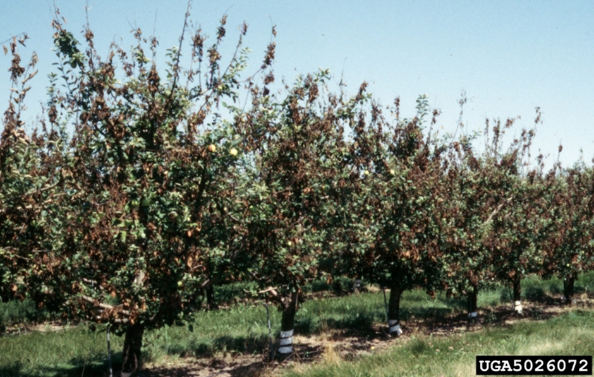
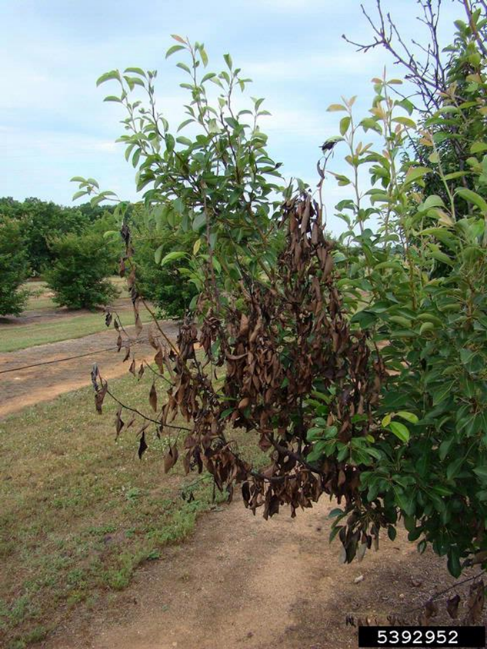


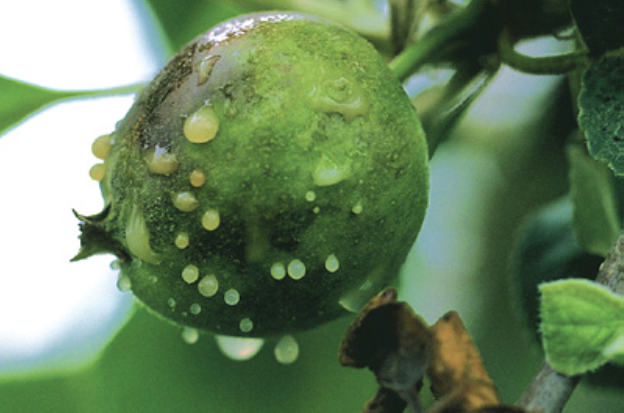

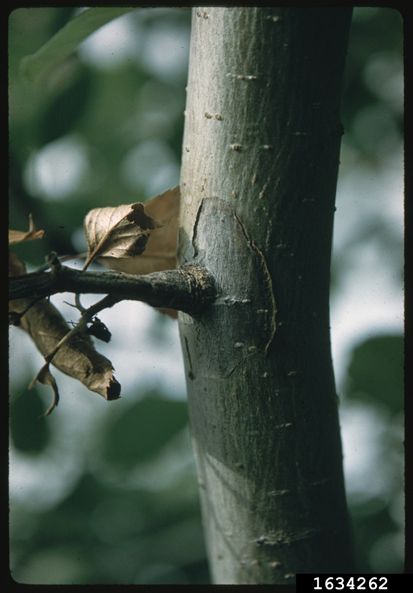
Plants affected by fire blight
It affects the following hosts:
- apple
- pear
- loquat (Figure 8)
- quince
- cotoneaster
- hawthorn
- photinia
- pyracantha (Figure 9)
- some cane fruits and other ornamental plants (Figure 10).

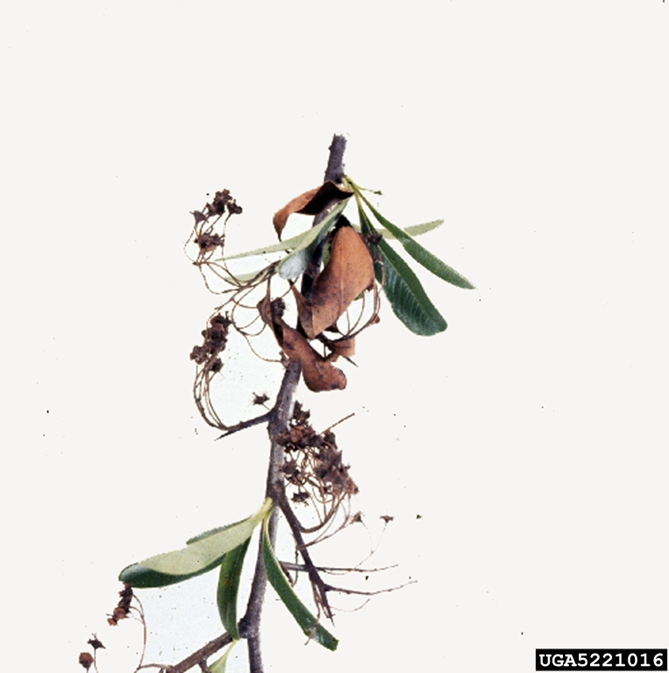

Where fire blight is found
Fire blight is not present in Australia.
Fire blight seriously affects fruit production worldwide. It exists in:
- New Zealand
- North America
- the United Kingdom
- Europe
- the Middle East.
Spread of disease
Plants can become infected in the following ways:
- blossoms where the bacteria is transported by bees during pollination
- surface injuries caused by insect feeding, hail or mechanical damage
- bacterial exudate can be dispersed locally by wind, rain, insects and birds.
Control
There's no single effective treatment for fire blight.
Notify us immediately
Reporting an unusual pest or disease of plants or honey bees
Report any unusual plant pest or disease immediately using our online reporting system or by calling the Exotic Plant Pest Hotline on 1 800 084 881. Early reporting increases the chance of effective control and eradication.
Please take good quality photos of the pests or damage to include in your report where possible, as this is essential for rapid pest and disease diagnosis and response. For tips on how to take a good photo, visit the Cesar Australia photo for identification guide.
Your report will be responded to by an experienced staff member who will seek information about the detection and explain next steps, which may include a site visit and sampling to confirm the pest or disease.
Report onlinePhoto credits
Figure 1: Courtesy Jody Fetzer, Maryland National Capital Park and Planning Commission, Bugwood.org
Figure 2: courtesy of Rebekah D. Wallace, University of Georgia, Bugwood.org.
Figure 3: Courtesy of Mary Ann Hansen, Virginia Polytechnic Institute and State University; Bugwood.org
Figure 4: Courtesy of Guido Schnabel, © Department of Agriculture & Environmental Sciences, Clemson University.
Figure 5: A.L. Jones, Michigan State University.
Figure 6: Courtesy of Florida Division of Plant Industry, Florida Department of Agriculture and Consumer Services, Bugwood.org
Figure 7: Photo by Penn State Dept. of Plant Pathology & environment Microbiology Archives, Penn State University., Bugwood.org.
Figure 8: Courtesy of Florida Division of Plant Industry, Florida Department of Agriculture and Consumer Services, Bugwood.org
Figure 9: Courtesy of Florida Division of Plant Industry , Florida Department of Agriculture and Consumer Services, Bugwood.org
Figure 10: Courtesy of Brian Olson, Oklahoma State University, Bugwood.org